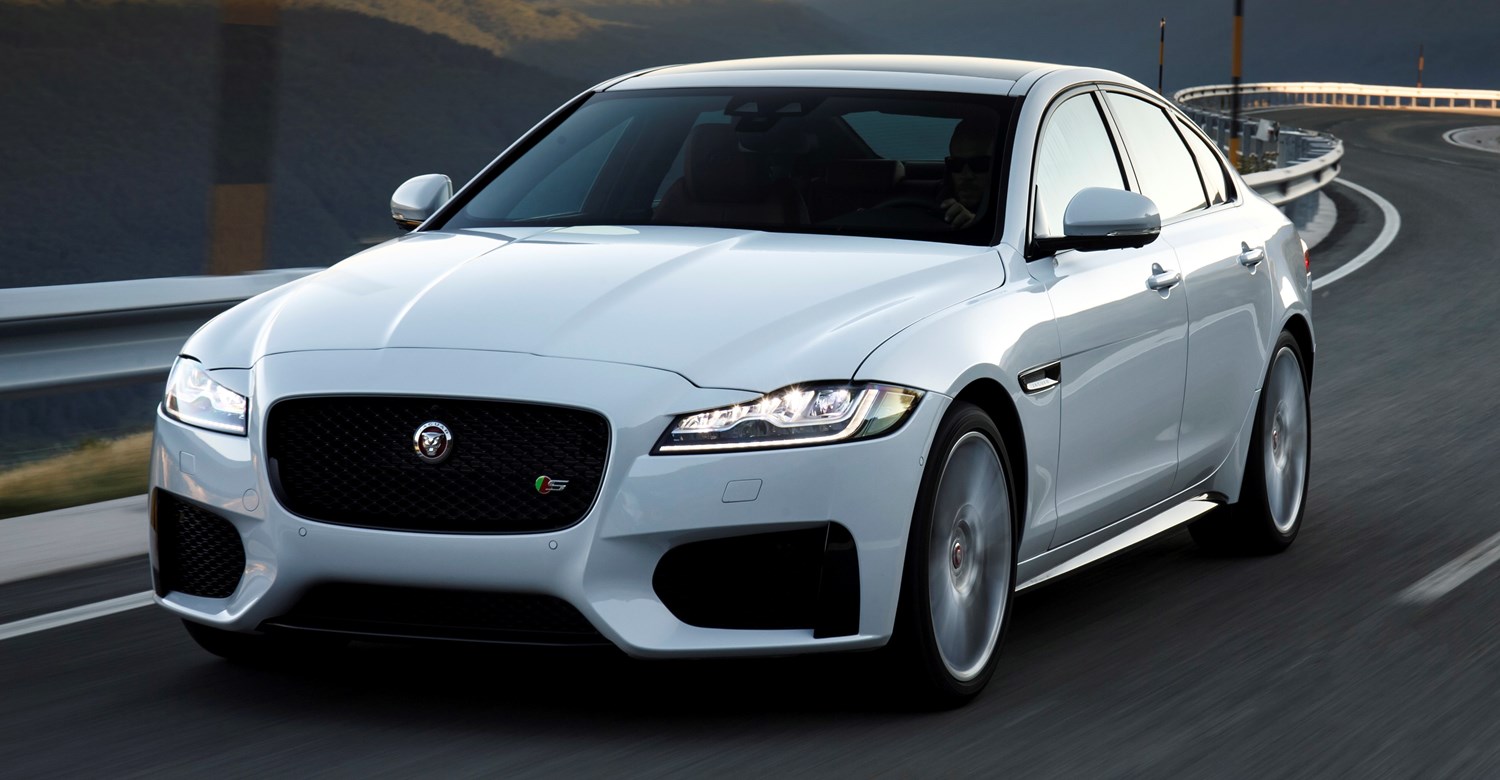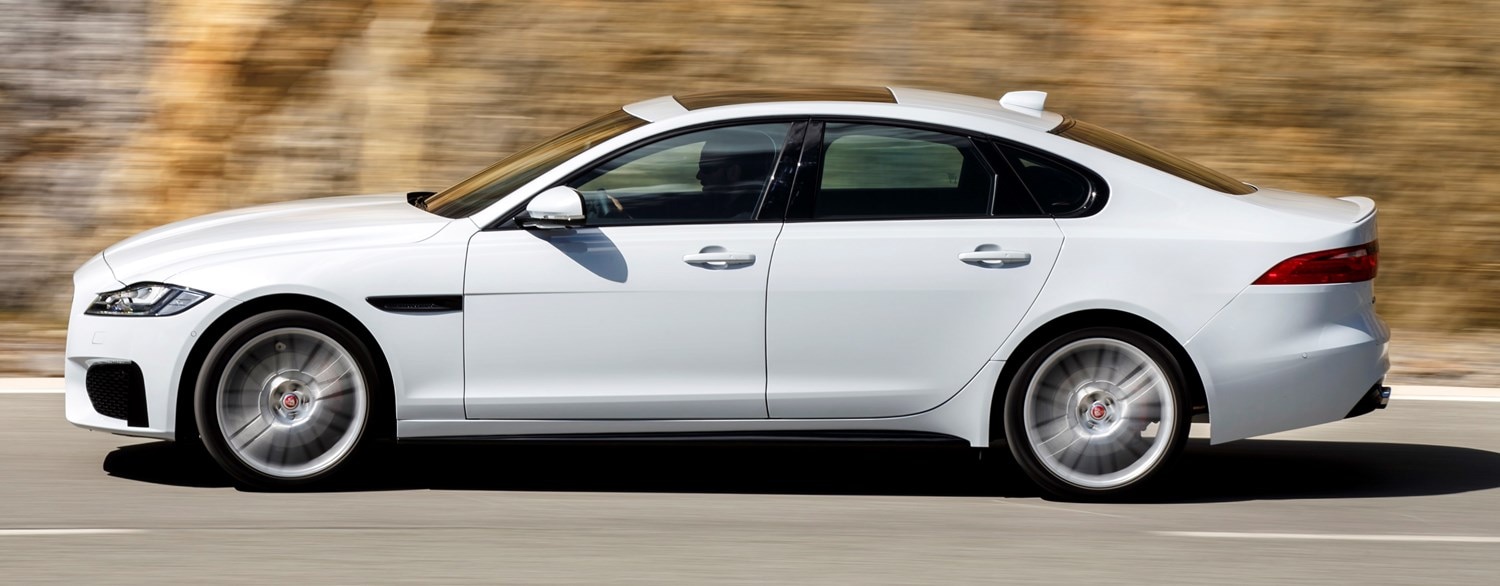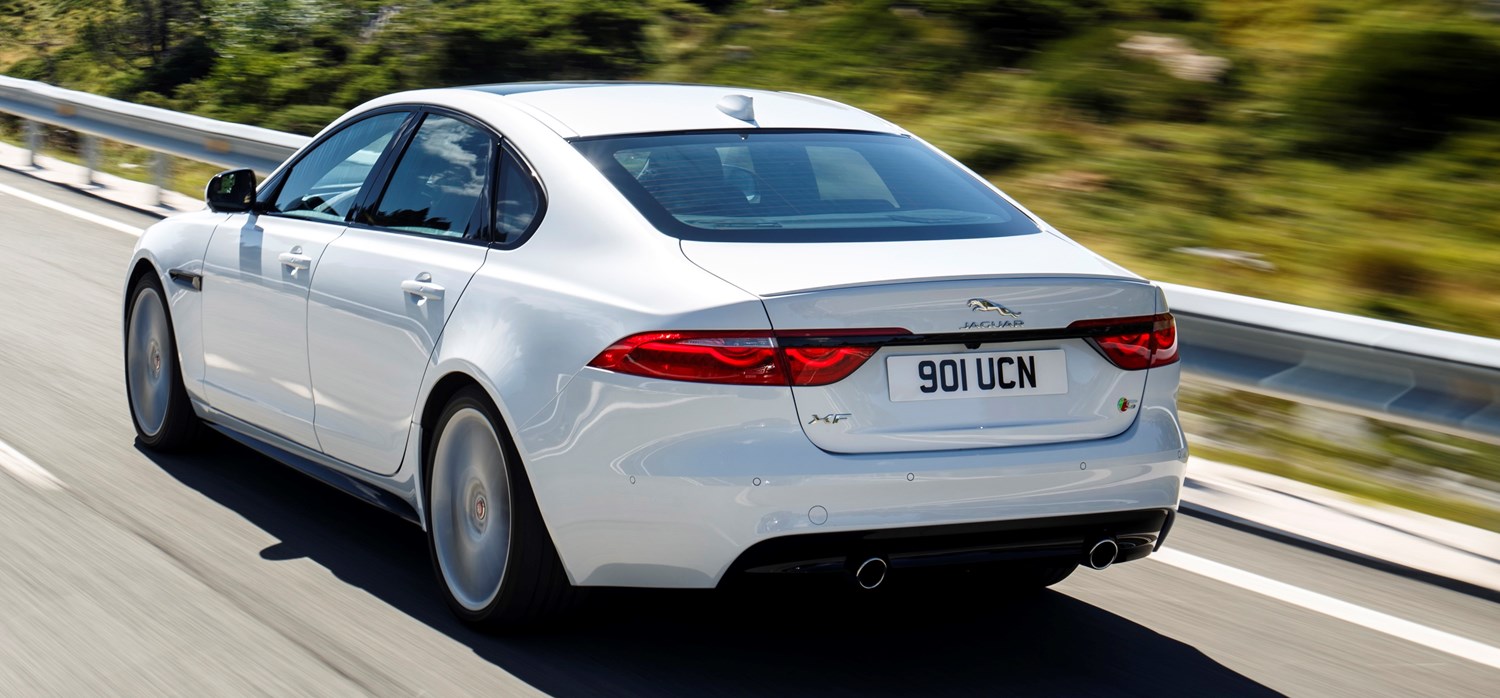Model review
The first generation XF was unveiled at the 2007 Frankfurt Motor Show. It was a replacement for the S-Type, a car which was dated and from an era Jaguar was trying to distance itself from. The XF signalled an all-new design direction, which would be a turning-point for Jaguar.
Designed by Ian Callum – the man responsible for designing the achingly beautiful F-Type – the XF also had a modern interior, featuring swivelling dials and a central gearshift dial, which was all very advanced for 2007.
Jaguar released an equally stunning estate version of the XF in 2012 – the Sportbrake. The same year, Jaguar announced it was making an even faster version of its XFR flagship model. The XFR-S, available in both saloon and estate guise, had 542bhp and was capable of a 0-60 time of just 4.4 seconds.
In 2015, the second generation of the XF was launched. Heavily based on the smaller XE, it is still quite hard to distinguish the two cars on looks alone.
Latest Model
The second generation of the XF follows on from the success of the XE. Made mainly from aluminium, the car is light and therefore agile to drive because of this. The XF now comes with a range of efficient engines, something the first-generation model lacked.
Jaguar’s latest addition to the XF is the second generation XF Sportbrake. The specs and engines largely remain the same as the saloon model, although the 3.0-litre petrol engine will not make its way to the UK. The model is already available to order, with deliveries expected to start at the end of 2017.
Value for money
The XF represents good value for money, undercutting rivals from Audi, BMW and Mercedes by at least £1,000, starting at £32,490. The XF also has good levels of standard equipment, including 17-inch alloy wheels, xenon headlamps, leather seats, in-control apps, cruise control with intelligent speed limiter and a rear parking aid available as standard on the XF Prestige trim level.
The XF represents good value for money used too. There are plenty of early 2008-9 cars available with the 2.7-litre diesel engine for under the £10,000 mark. However, we would recommend the later 2.2-diesel engine which is much better on fuel and doesn’t compromise on performance too much.
2012 examples with around the 50,000 miles can be picked it from around £12,500 which represents exceptional value for money, and would make a great used purchase. The only two things we would advise avoiding are those cars with 17-inch wheels and that don’t have full leather seats.
Looks and image
The XF is undisputedly a stunning looking vehicle, which has helped Jaguar escape from the ‘old-man’ image it always struggled with in the past. Put simply, you will no longer receive eye-rolls when you say you own a Jaguar. The first problem for Jaguar was adjusting the XE chassis to the size of the XF, a move that ultimately shaped its proportions and extremely similar stance to the XE – no bad thing.
The new XF also unmistakably features design cues from the F-Type, particularly at the rear. The first-generation XF was a good-looking car, but the latest model has certainly moved the game forward even more in terms of design.
The interior is also a great place to be, both in terms of comfort and to look at. The XF also features a great eight-inch display as standard, which can also be upgraded to a 10.2-inch screen. The thing you will notice if you are familiar with the Jaguar brand is just how similar the interior is to the XE and XJ.
Jaguar gets the balance just right between agility and comfort. While the XF may not quite have the dynamic capability of a 5-Series, it is still a good car to drive. For those wanting adaptive suspension, Jaguar’s Adaptive Dynamics is only available on certain models, so it is definitely worth trying the car with and without the suspension to work out if you think it is worth paying the premium, all depending on personal suspension preferences.
Space and Practicality
As you may expect from an executive car of this size, the XF is a spacious car. The boot capacity is equally matched to its German rivals too, with 540 litres of boot space – comparable to the Mercedes E-Class – there should be easily enough space for everything you want to carry. It is also 10 litres bigger then the Audi A6 and BMW 5-Series boot space. The rear space is also equally impressive and a significant improvement over the old-generation XF, which in its aim for sport, it compromised on rear space. The rear should also, just, be capable of carrying five people, Jaguar are keen to boast about this class-leading rear space too.
Front space is also impressive too, as it’s exceptionally comfortable and roomy. Even for tall adults there is plenty of room upfront, with the flexibility of the seating and steering position also helping to make sure that every driver should always be able to get comfortable.
The current generation XF was tested by Euro NCAP back in 2015, when it achieved the full five-star safety rating. In every category itimpressed with even pedestrian safety scoring highly – 80 per cent – thanks to sensors which are able to sense pedestrians and raise the bonnet to reduce the likelihood of serious injuries if this type of collision was to occur. Safety equipment such as Autonomous Emergency Braking (AEB) and lane departure warning are also standard across most models in the range.
While the XF is not particularly targeted at the family market, it is easily spacious enough to be used as a family car, even with the awkward-shaped saloon tailgate.
Engines
Jaguar offers a range of engines and outputs for the XF.
With diesel engines, the range starts with a 2.0-litre 161bhp engine, which has excellent running costs, managing an average fuel consumption of 70.6mpg and emitting just 104g/km of CO2. The 2.0-litre diesel engine is also offered with 178bhp or 237bhp OUTPUTS, the latter only being available with the automatic gearbox. Both of these variations are also available with rear-wheel drive (RWD) and all-wheel drive. The XF is also available with a 3.0-litre V6 diesel engine with 296bhp. This engine is only available on the range-topping ‘S’ model and as a RWD automatic.
With petrol engines, the range starts with the 2.0-litre. This engine is available with either 197bhp or 247bhp. The range topping petrol ‘S’ model comes with an impressive 3.0-litre V6 engine which produces 375bhp.
Running costs
The entry-level diesel engine – the 2.0-litre 161bhp – is excellent on fuel. Returning an average fuel consumption of 70.6mpg and emitting just 104g/km of CO2. While the petrol engines are not as cheap to run, even the range-topping performance model with 376bp manages 34mpg which is not too bad.
The insurance groupings also work in the favour of the XF, when compared to its rivals. The 161bhp 2.0-litre diesel starts in insurance group 25, and even the 178bhp variant sits in only group 27. As a comparison, the Audi A6 starts in insurance group 32. The only other thing to be aware of with the XF is road tax. While most models slot under the £40,000 price bracket, anything over that will result in far greater VED rates, which you need to bear in mind when purchasing and specifying a car.




